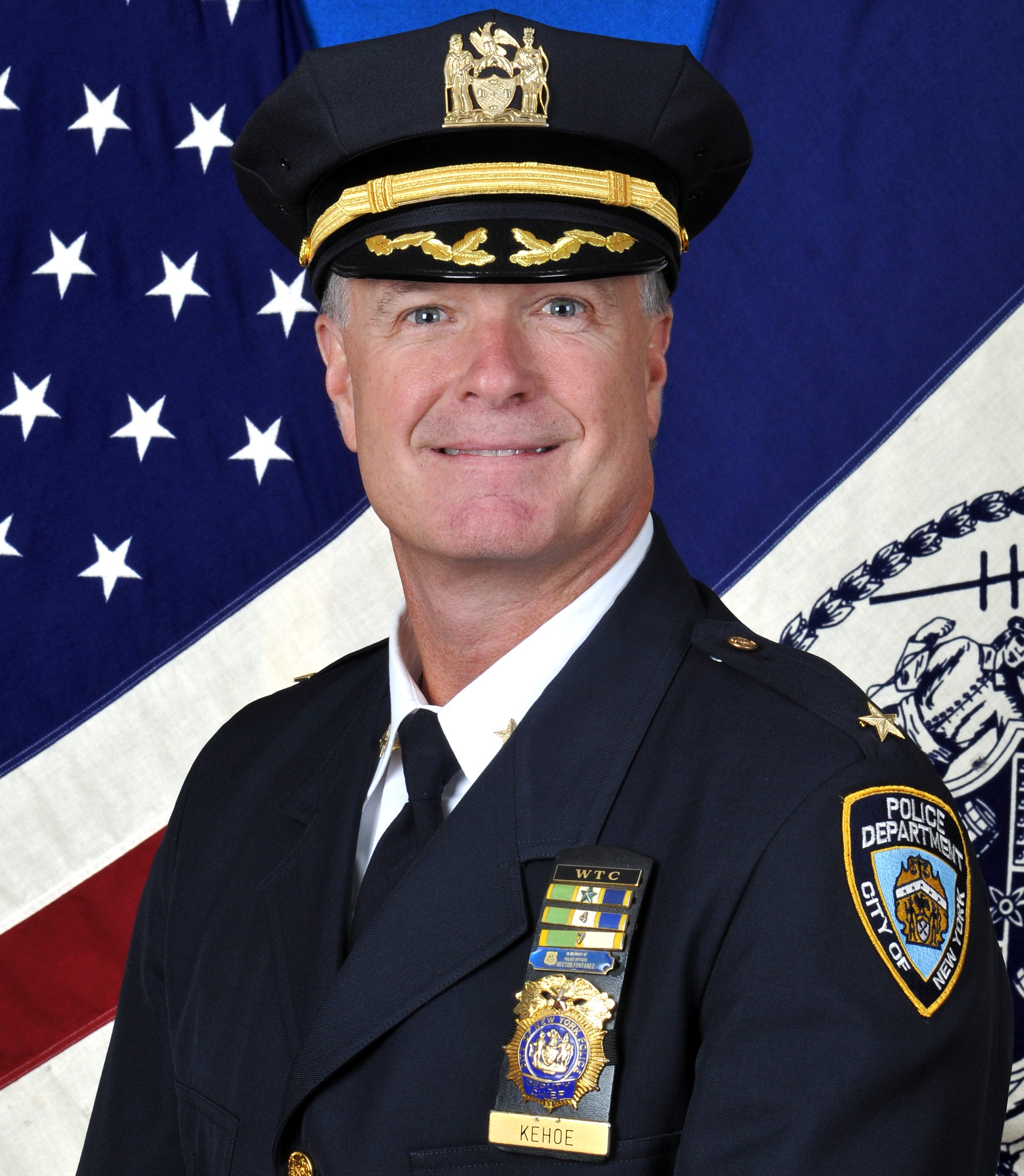
 New York City Police Department311
New York City Police Department311 Search all NYC.gov websites
Search all NYC.gov websites
Counterterrorism

Deputy Chief of Counterterrorism: James Kehoe
The NYPD Counterterrorism Bureau (CT) is the city's primary local resource to guard against the threat of international and domestic terrorism in New York City. The latest addition to the bureau is a team of dedicated, highly trained counterterrorism officers, called the Critical Response Command, that is equipped and ready to respond to terrorist and active-shooter attacks.
The CT Bureau reviews possible terrorist targets and develops innovative, forward-thinking policies and procedures to guard against attacks, training first responders and specialized units and developing intelligence capabilities for detecting and preventing terrorist attacks. The bureau coordinates with federal, state, and other law enforcement agencies in intelligence gathering and sharing, and plays an integral role in the FBI's Joint Terrorist Task Force.
Critical Response Command (CRC) is one of the Department's first lines of defense against a terrorist-related attack. A permanent cadre of hand-selected police officers devoted to counterterrorism, CRC members are trained to respond swiftly, with sufficient expertise and force, to the most highly organized and heavily armed attacks. All CRC team members are trained in special weapons and long-range guns, explosive trace detection, radiological and nuclear awareness, biological and chemical weapons awareness, and are equipped with the skills to detect an impending attack and utilize the best possible response to an emerging situation. The team conducts daily counterterrorism deployments to critical infrastructure sites throughout New York City, saturating strategic locations with a uniform presence to disrupt and deter terrorist planning and hostile surveillance operations.
Counterterrorism Division has wide-ranging responsibilities, overseeing:
- The Technology and Construction Section designs and implements large-scale counterterrorism projects, such as the Lower Manhattan Security Initiative and Operation Sentinel, bringing these projects from initial concepts to deployable operations;
- The Training Section develops and delivers counterterrorism training to the patrol force and to other law enforcement agencies and private sector entities;
- The Threat Reduction Infrastructure Protection Section (TRIPS) identifies critical infrastructure sites throughout the city and develops protective strategies for these sites;
- The Chemical, Biological, Radiological, Nuclear, and Explosives (CBRNE) Section researches and tests emerging technologies used to detect and combat chemical, biological, radiological, nuclear and explosive weapons, and develops plans and policies for their use;
- The Maritime Team develops systems and programs to increase harbor security. The Maritime Team uses the Tactical Radiological Acquisition Characterization System (TRACS) for pro-active deployments and mapping of background radiation in the Port of New York/New Jersey. This is the only waterborne deployment of TRACS equipment in the nation;
- The NYPD SHIELD Unit manages the Department's public-private security partnership, providing training and information to the private sector and addressing concerns from the private sector;
- The Emergency Preparedness and Exercise Section is the Department's interface with the NYC Office of Emergency Management.
The Bomb Squad is charged with the investigation and mitigation of suspicious packages, devices, and articles found throughout the city. They are responsible for rendering safe, dismantling, transporting, and disposing of bombs, explosives, incendiary devices, and dangerous chemicals. They work in conjunction with the Crime Scene Unit to search for, identify, collect, and forward explosive related forensic evidence in support of investigations. Members are equipped with a variety of specialized tools, including the Total Containment Vessel (TCV). The TCV is able to contain both the force and the fragmentation of an explosive device. The suspected devices can then be safely transported to the NYPD's training and demolition range at Rodman's Neck in the Bronx. Robots are also used to remotely observe, manipulate, and move suspected devices.
Joint Terrorist Task Force (JTTF) is a multi-law enforcement agency that includes NYPD detectives and FBI special agents who investigate terrorism in the New York City metropolitan area and around the world. Following the 9/11 attacks, the NYPD substantially increased the number of detectives assigned to the JTTF. This partnership with the FBI and other law enforcement agencies provides the NYPD with access to national level classified intelligence and the ability to analyze and share its own intelligence on the federal level.
Domain Awareness System (DAS) is a powerful counterterrorism and policing tool jointly developed and built by the NYPD and Microsoft. As a central platform, DAS is used to aggregate data from internal and external closed-circuit television cameras, license plate readers, and environmental sensors, as well as 911 calls and other NYPD databases. DAS uses an interactive dashboard interface to display real-time alerts whenever a 911 call is received or a sensor is triggered.
Lower Manhattan Security Initiative (LMSI) is designed to detect threats and perform pre-operational terrorist surveillance south of Canal Street in Lower Manhattan. LMSI combines an increased police presence with technology to accomplish its mission.
Terrorism Threat Analysis Group performs strategic intelligence analysis and disseminates this information, both open-source and classified, to the appropriate recipients in the Department, the private sector, the U.S. intelligence community, and other law enforcement agencies.
World Trade Center Command is responsible for the policing and security in the World Trade Center area.
Important Links and Resources
- How to Identify a Suspicious Package
- Active Shooter: Recommendations and Analysis for Risk Mitigation
- World Trade Center Campus Security Plan
- Engineering Security: Protective Design for High Risk Buildings
- Domain Awareness System
- NYPD Shield: Public-Private Partnership
- NYC Office of Emergency Management
- NYC OEM/Ready New York
- US Department of Homeland Security
- Be Ready! Make a Kit, Make a Plan, Be Informed


